







 |
 |
 
  

 
|
||||||||
The Council firmly believes that the number of road accidents and severity of casualties can be greatly reduced through the achievement of the road safety objectives of safer roads, safer road users and safer vehicles. Road improvement measures are implemented to provide a safer road environment to help minimise traffic accidents and road casualties. In the past year, various local traffic improvement measures have been implemented across all districts to enhance road safety.
In addition to local traffic improvement measures, the Transport Department has conducted route studies and investigations at 100 accident black spots to identify potential safety problems on roads and respond with a holistic approach to implement improvement measures that enhance road safety along the routes and at the black spots concerned.
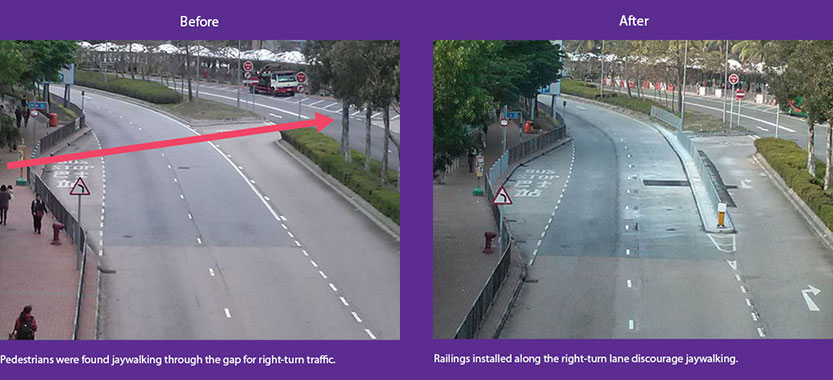
The Transport Department is applying technology to enhance road safety.
Among the approximately 1,860 road junctions at which traffic signals are installed to safely regulate and control vehicular and pedestrian traffic, 155 have been installed with red light cameras to deter drivers from jumping red lights. To intensify the deterrent effect, a further 40 signalised junctions are being installed with red light cameras. In addition, the installation of 120 speed enforcement camera housings was completed for operation to deter speeding.
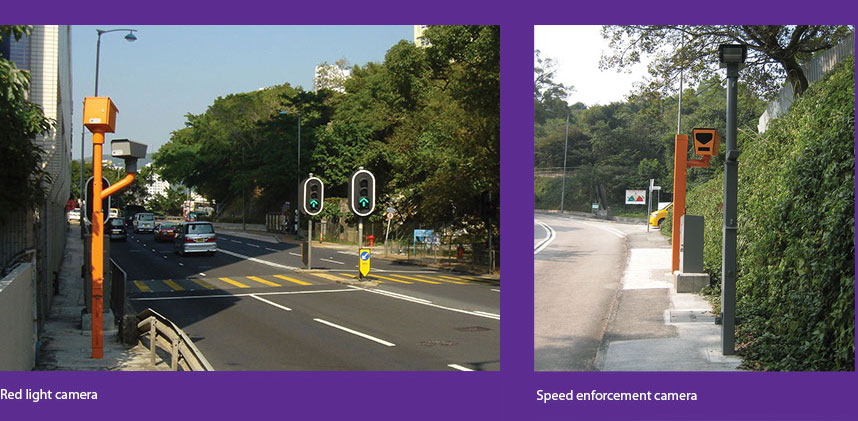
Metallic road studs have long been used to indicate the limits of pedestrian crossings. As a continuous improvement initiative, thermoplastic road studs are being used to replace metallic road studs at pedestrian crossings. The thermoplastic material is the same as that used in thermoplastic road marking and the new studs have better slip resistance, reducing the danger to road users if they detach.
Trial laying of thermoplastic road studs was carried out at various locations across the territory in 2011. The trial revealed that the replacement of metallic studs with thermoplastic ones at pedestrian crossings is technically feasible from a maintenance point of view. Disabled groups were also consulted on the use of thermoplastic road studs at pedestrian crossings and positive responses were received.
In view of the positive trial findings, HyD implemented the use of thermoplastic road studs on new pedestrian crossings in lieu of metallic studs in 2013. Metallic studs on existing crossings will be replaced progressively in association with related road maintenance operations.
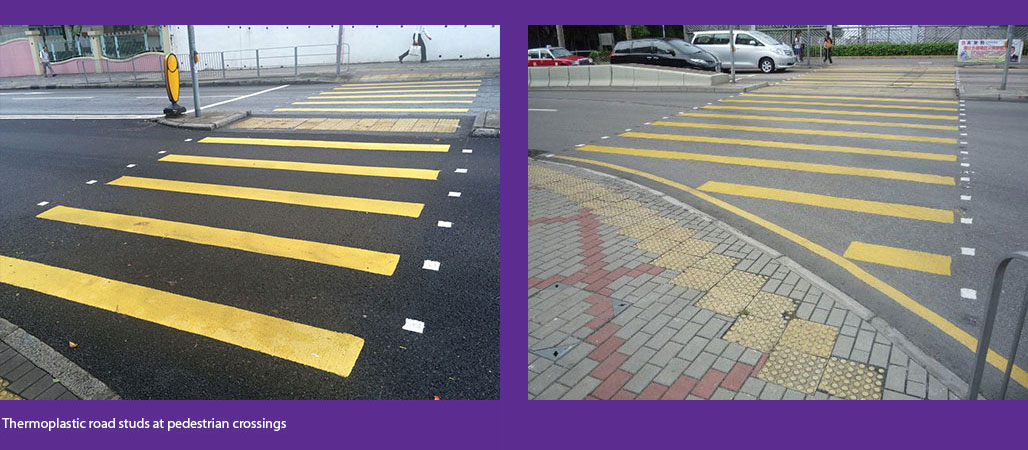
Traffic bollards are used to guide motorists into the correct traffic lane. However, conventional traffic bollards are susceptible to traffic collisions, resulting in a high damage rate and affecting serviceability. To improve the situation, HyD implemented a trial of Non-illuminated Retro-reflective Traffic Bollards (NRTBs). A NRTB is equipped with a reflective sign plate that is highly visible lighted by vehicle’s headlights. Crucially, the bollard bounces back to the upright position after collision, which greatly enhances service availability compared with traditional traffic bollards.
The trial of NRTBs has been carried out at over 900 points since 2008 and indicates that NRTBs are suitable for installation at locations where the driver sees the signage straight ahead. Damage rates are significantly lower and energy is saved since NRTBs require no electricity to operate.
Based on these positive findings, HyD will install NRTBs for new traffic bollards or replace damaged existing traffic bollards at suitable locations.
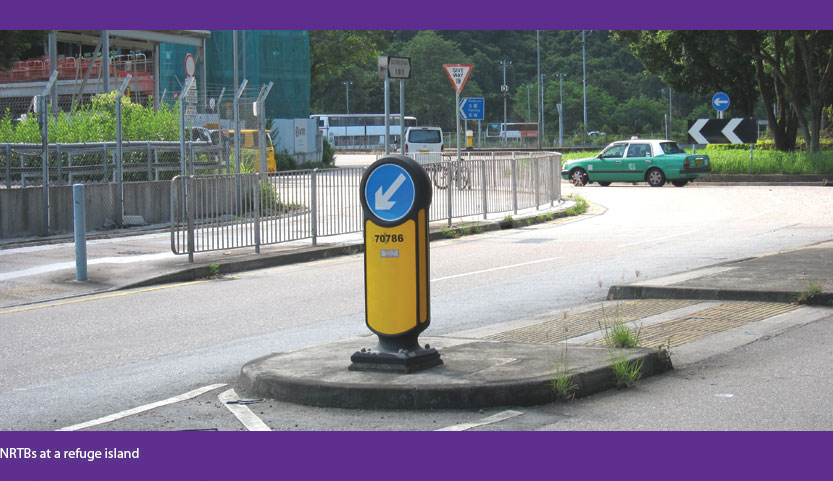
All vehicles registered in Hong Kong are required to undergo type approval and / or pre-registration examination to ensure they meet requirements stipulated in the Road Traffic Ordinance. All commercial vehicles, including goods vehicles, buses, public light buses, taxis and trailers, are required to pass a pre-registration examination and roadworthiness examination each year. All private cars six years old or older are required to pass an annual examination. Vehicle owners have the responsibility to properly maintain their vehicles to ensure their roadworthiness.
In October 2014, it became mandatory for all newly registered goods vehicles in Hong Kong to have a Reversing Video Device fitted to provide a clear view to the rear, with the aim of further enhancing the safety of reversing goods vehicles. Moreover, Electronic Data Recording Devices became mandatory on all newly registered Public Light Buses in Hong Kong, from December 2014.
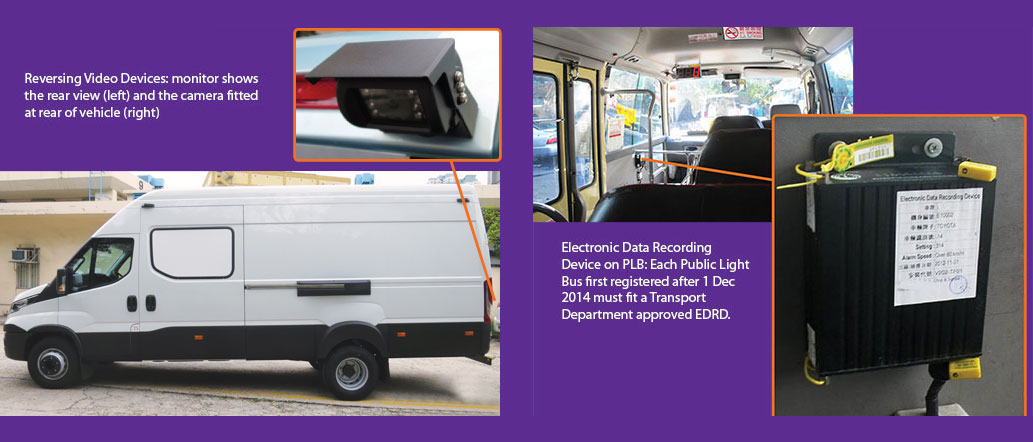
Education |
 |
Legislation and Enforcement |